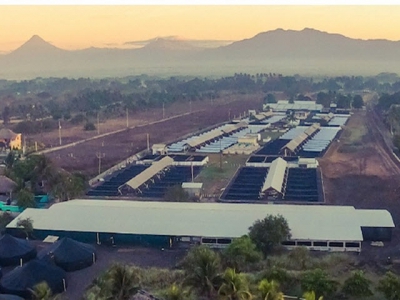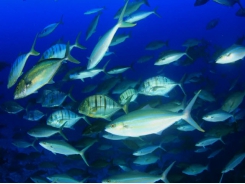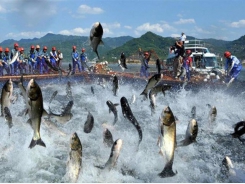Guatemalas Acuamaya bets big on shrimp sector with hatchery improvements

BOSTON, Massachusetts, US -- Guatemala's largest shrimp farmer remains hopeful that the country can position itself as a larger player in the sector and recently invested in its hatchery production in order to do so.
Gabriel Biguria, who heads sales for Acuamaya, told Undercurrent News at the recent Boston seafood show that in December, the Guatemala City-headquartered company recently expanded the capacity of its La Calendaria hatchery by 25%. The hatchery can now produce some three billion post-larvae annually, more than enough for its own needs and plenty for others.
"Our hatchery is still supplying most of the larvae for Guatemala and the Guatemalan industry," he said. "Fortunately, it’s doing very well and expanding. We made a huge investment in the expansion of our capacity because we have a lot of responsibility for the development of the Guatemalan industry but also we export our larvae to other countries.”
Better circulation at the hatchery and investments in genetics, traceability and the company's selection and maturation facilities will help, Biguria said.
“The key thing is not the volume but the quality of the larvae applied to the conditions where we managing our systems. We’re seeing, fortunately, very good results consistently, not only at our farm but at other farms in our industry,” Biguria said.
The vertically integrated shrimp farmer has three farms, two of which use intensive shimp production methods while the third, its largest, farms semi-intensively.
“We like to keep different systems," Biguria said. "This allows us to experiment with the larvae as well as feeds. It allows us to have a parameter for measuring different variables that we are trying to control in a way that we can get the best results.”
The company had a record output of 4,000 metric tons in 2017 using 400 hectares and hopes to surpass that level this year, he added.
The company is also undergoing expansion at its farms and better optimizing use of its ponds, putting in liners that allow farmers to handle higher densities and installing so-called “shrimp toilets” that allow for more efficient disposal of waste. Acuamaya is now working on similar capital improvements to its original farm, built in 1983.
Guatemala remains a modest player in the global shrimp market and was expected to produce some 20,000 to 25,000 metric tons in 2018. But several of the country's farmers hope to intensify their farms similar to the way several Asian countries have done and turn the country into a larger force in the sector.
Last June, on the back of a volcanic eruption, which did not harm shrimp production Biguria said, the country hosted its first Guatemala Aquaculture Symposium with the aim of drumming up awareness, support and outside investment for shrimp and tilapia farmers, he said.
“It’s helping to drive interest now, not only from local players but also from outside investors. We’re starting to see now the emergence of some investment from abroad, investment that will likely be announced soon,” he said.
He pointed to interest in Central American shrimp farming from Canada's Cooke, which recently purchased large farmers in Nicaragua and Honduras, as a sign of investors' increasing confidence in the region.
Related news
Tools

Phối trộn thức ăn chăn nuôi

Pha dung dịch thủy canh

Định mức cho tôm ăn

Phối trộn phân bón NPK

Xác định tỷ lệ tôm sống

Chuyển đổi đơn vị phân bón

Xác định công suất sục khí

Chuyển đổi đơn vị tôm

Tính diện tích nhà kính

Tính thể tích ao



 Profits double for EU aquaculture
Profits double for EU aquaculture  Soy trumps fishmeal in catfish diet research
Soy trumps fishmeal in catfish diet research